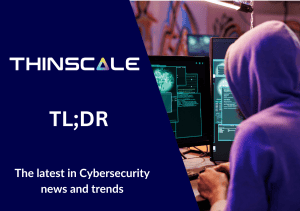Anyone working in IT security can attest to the difficulties in maintaining effective security posture in their environment with uneducated or unaware end-users. The context that security training provides is vital for employees to understand why they are working within their specific parameters.
Without this insight, it is little surprise that 74% of security breaches in 2023 were attributed to human error.
So, with all this in mind, what can an IT department do to educate their workforce so they are as protected as possible against potential threats? The answer is: Security Awareness Training.
Security Awareness Training: What does it entail?
The beauty of security awareness training is that it can be tailored to the specifics of any workforce; however, generally, based on the most prevalent workplace breach sources, there is a throughline in most successful training models.
Endpoint Security:
First and foremost, employees need to understand that their workplace devices are not personal machines, there are restrictions that should be in place to ensure they are secure at all times. They must also understand the reasons for the implementation of this endpoint security, so they will be less likely to attempt to get around the security policy put in place on the endpoint.
Malware Awareness:
There are many different types of malicious software, while employees do not need to know every type, they should know the most prevalent, ie. Viruses, Trojans, Botnets, Spyware, and Ransomware. How to identify malware, and what to do if they suspect their device is infected with a malicious actor.
MFA implementation and understanding:
Communication of your organizations password policy and a guide on how to set up MFA are necessities in the modern workforce. Employees should be educated on the best practices of secure passwords and encouraged to frequently update them if this is not something enforced by your organization automatically.
Network and Wi-Fi practices:
Employees need to be made aware of the dangers around unsecured Wi-Fi network, as they provide easy targets for hackers to perform Evil Twin attacks, Man-in-the-middle attacks, password cracking attacks, and more. Ideally an employee would also be educated on VPN usage, if not required by the organization outright, as a method of more safely accessing corporate resources.
Social Engineering:
This is a common pitfall for many employees, primarily it uses manipulation to trick unaware users into divulging sensitive information. This can take many forms, most commonly these are Phishing, Baiting, Scarware, amongst many more.
Breach Recovery:
It is recommended that organizations have in place a clear and communicated breach recovery protocol should a breach occur. Employees should be encouraged to perform backups of vital files, and be told how they can help by isolating devices. The most important thing in the case of a data breach is speed. How quickly can your organization isolate the devices, solve the issue, and restore functionality to the environment.
Conclusion
An educated workforce is a much more secure workforce. While there are organizations that can provide excellent overviews for a safe and aware workforce (Cyber Essentials, ISO 27001, SOC 2, NIST Cybersecurity framework, and more), it is important for IT departments to do their research and understand the needs and risks in their companies!



